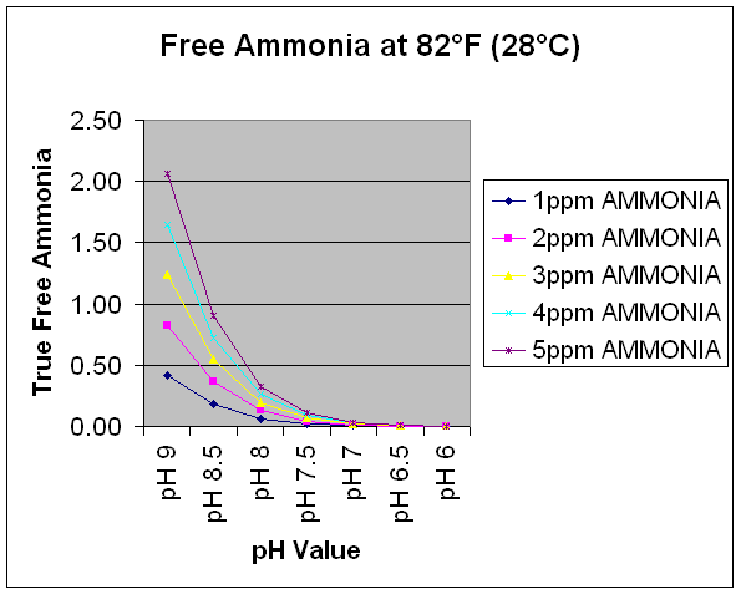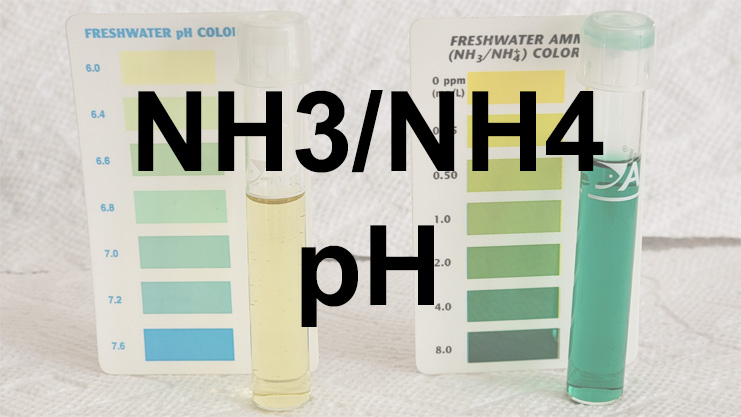Ammonia's toxicity to fish is very well known. Most aquarium and pond-related books dedicate at least a paragraph or two to the subject. What is often not mentioned in many books is the relationship pH plays in the toxicity of ammonia.
Ammonia concentration in a new aquarium or pond is a chemical we have to watch closely to make sure the levels do not reach a point where they start killing fish. The death of many fish species can begin with as low as .6 parts per million (ppm). In established systems, the ammonia level reads typically 0 ppm.

When you test for ammonia with your aquarium or pond test kit, the reading you have is a combination of ammonium (NH4+ or ionized ammonia) and ammonia (NH3 or unionized ammonia), known as Total Ammonia Nitrogen (TAN). Ammonia is the toxic part of the TAN. Ammonium, even at high concentrations, does not cause mortality in fish.
Understanding the difference between the two is crucial to figuring out how much toxic ammonia you have in your system. How much of the TAN you have that is toxic is greatly related to the pH of the water and to a much lesser extent, the temperature. The higher the pH, the greater the amount of TAN is ammonia.
Water with a temperature of 82° F (28° C), a pH of 7.0, and a TAN of 5 ppm has only .03 ppm ammonia. If you are trying to keep Tanganyikan Cichlids in water with a pH of 9.0, which has a TAN of 5 ppm, your ammonia level is 2.06 ppm (a deadly danger zone). This is why saltwater fish and African cichlids are thought to be more sensitive to ammonia; these fish are typically maintained in water with a pH of 8.2 or greater.
At a pH of 6.0 and 10 ppm of TAN, the ammonia is only .007 ppm. While it looks like the fish mortality should be very high, the fish are doing fine. The graph below provides a "True Free Ammonia" chart that can be referenced for figuring out how dangerous your TAN reading is.
South American and West African cichlid breeders that maintain a low pH below 6.0 need to be cautious when performing water changes, as the low pH has an adverse effect on the nitrifying bacteria that convert ammonia to nitrite. Because of the acidity, these bacteria populations can drop so low that the TAN reading can rise quickly. While the pH stays low, the TAN reading is nearly all ammonium, but if you do a water change or add an alkalinity buffer to the system, the ammonium can be quickly converted to ammonia, potentially causing ammonia poisoning.
Ammonia toxicity is greatly affected by the pH in the system. You need to test the pH and the total ammonia nitrogen level to determine the actual ammonia toxicity level. The TAN is far more toxic at a higher pH. An online ammonia calculator can be found in the free ebook Planted Aquarium Keep It Simple.
